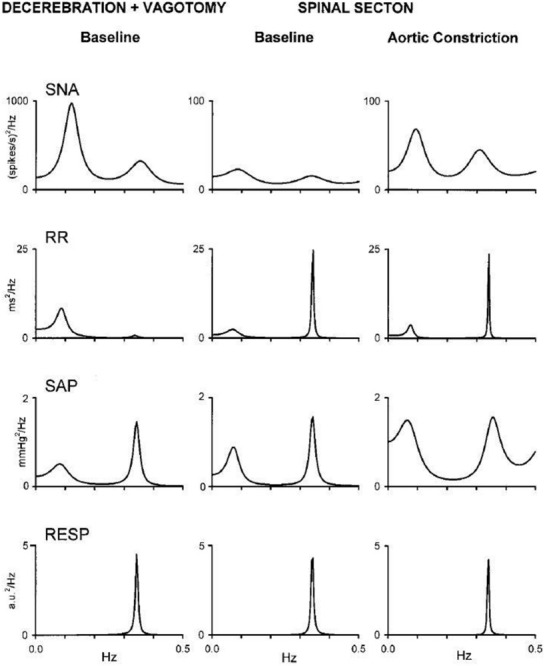FIGURE 4.

Cervical transection and aortic constriction elicits dynamic changes in cardiovascular spectral variabilities in a vagotomized unanesthetized midcollicular decerebrate cat. Spectral analysis of sympathetic nerve activity (SNA), cardiac interval (R–R interval), and systolic arterial pressure (SAP) reveal a low-frequency (i.e., LF) spectral peak corresponding with Mayer waves and a high-frequency (i.e., HF) spectral peak corresponding with Traube–Hering waves. Ventilatory frequency reveals high frequency oscillations corresponding with Traube–Hering waves. Spectral peaks corresponding with Traube–Hering and Mayer waves persisted in recorded cardiovascular variabilities following cervical spinal transection and mechanical constriction of the aortic lumen (i.e., eliciting the soi-disant spinospinal sympathetic reflex) augmented amplitude of Traube–Hering and Mayer waves in sympathetic neural efferent activity and arterial pressure, indicating native capacity of the spinal cord to generate Mayer waves exhibiting oscillatory properties subject to peripheral modulation. Modified with permission from Figure 2 of Montano et al. (2000).
